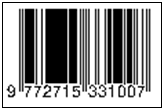Penilaian Jaringan Parut Paska Insisi Kulit Menggunakan Patient and Observer Scar Assessment Scales (POSAS): Perbandingan Hasil Penggunaan Monopolar Electrosurgery dan Pisau Bedah
DOI:
https://doi.org/10.35790/msj.v2i2.32731Abstract
Abstract: Scalpel was once considered as the gold standard in surgical incisions. Electrosurgery has been used as a substitute for scalpels but has not been accepted as standard due to burns and injuries. Patient and observer scar assessment scale (POSAS) is a subjective scar assessment of the patient as well as the observer. This study was aimed to compare post-skin-incision scarring of monopolar electrosurgery and scalpel, and evaluate the appropriateness of scar assessments of the observer and the patient by using POSAS. This was a self-controlled trial design. Post-incision scar tissue assessment was carried out simultaneously by the observer and the patient in the third month after the operation was completed. The paired t test or Wilcoxon rank sum test showed that the differences of assessments of either patient or observer or both were not significant (p=0.05). The correlation test between the total POSAS scores of the patient and observer assessments showed a moderate linear relationship (r=0.51; p<0.001). In conclusion, the use of monopolar electrosurgery and scalpel in performing skin incisions resulted in the formation of equally good scar tissues. The POSAS assessments of patient and observer showed a moderate degree of similarity.
Keywords: electrocautery, scar tissue, surgery scalpel, patient and observer scar assessment scale (POSAS)
 Â
Abstrak: Pisau bedah dahulu dianggap sebagai standar emas dalam insisi pembedahan. Electrosurgery telah digunakan sebagai pengganti pisau bedah namun belum diterima sebagai standar karena luka bakar dan cedera. Patient and observer scar assessment scale (POSAS) merupakan instrumen penilaian jaringan parut yang bersifat subyektif baik dari pasien maupun observer. Penelitian ini bertujuan untuk membandingkan jaringan parut pasca insisi kulit antara monopolar electrosurgery dan pisau bedah serta mengevaluasi kesesuaian penilaian jaringan parut hasil insisi kulit dari dokter pengamat dan pasien saat keduanya meng-gunakan POSAS. Desain penelitian ialah self-controlled trial. Setiap subjek mendapat dua macam perlakuan secara bersamaan: operasi dengan monopolar electrosurgery dan pisau bedah. Penilaian jaringan parut pasca insisi dilakukan bersamaan oleh observer dan pasien pada bulan ketiga setelah operasi selesai. Hasil paired t test atau Wilcoxon rank sum test terhadap penilaian dalam bentuk skor baik dari pasien atau observer ataupun keduanya terhadap perbedaan jaringan parut oleh penggunaan kedua modalitas tidak bermakna (p>0,05). Uji korelasi antara skor total POSAS dari pasien dan observer menunjukkan adanya hubungan linear sedang (r=0,51; p<0,001). Simpulan penelitian ini ialah penggunaan monopolar electrosurgery mau-pun pisau bedah untuk insisi kulit menghasilkan pembentukan jaringan parut yang sama baik. Penggunaan POSAS dalam penilaian jaringan parut memperlihatkan tingkat kesamaan sedang antara pasien dan observer.
Kata kunci: electrocautery, jaringan parut, pisah bedah, patient and observer scar assessment scale (POSAS)
Downloads
Additional Files
Published
How to Cite
Issue
Section
License
COPYRIGHT
Authors who publish with this journal agree to the following terms:
Authors hold their copyright and grant this journal the privilege of first publication, with the work simultaneously licensed under a Creative Commons Attribution License that permits others to impart the work with an acknowledgment of the work's origin and initial publication by this journal.
Authors can enter into separate or additional contractual arrangements for the non-exclusive distribution of the journal's published version of the work (for example, post it to an institutional repository or publish it in a book), with an acknowledgment of its underlying publication in this journal.
Authors are permitted and encouraged to post their work online (for example, in institutional repositories or on their website) as it can lead to productive exchanges, as well as earlier and greater citation of the published work (See The Effect of Open Access).










